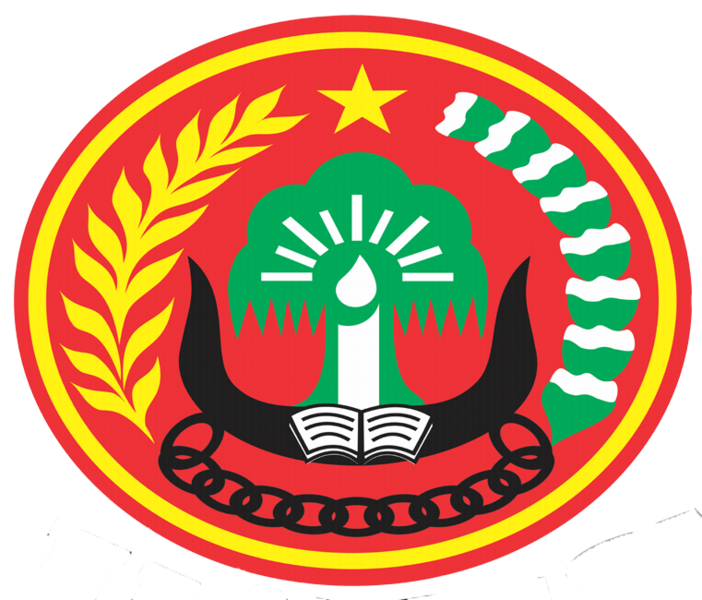Penerapan Metode ADDIE dalam Pengembangan Game islami Labirin untuk Pembelajaran Interaktif
DOI:
https://doi.org/10.70038/jentik.v2i3.135Keywords:
game labirin, metode ADDIE, pembelajaran interaktif, pengembangan media, unityAbstract
Kemajuan teknologi pendidikan memberikan peluang untuk menciptakan media pembelajaran interaktif yang lebih menarik. Namun, masih banyak media pembelajaran konvensional yang kurang mampu meningkatkan motivasi dan keterlibatan siswa. Penelitian ini bertujuan untuk mengembangkan dan mengevaluasi game labirin interaktif menggunakan metode ADDIE (Analysis, Design, Development, Implementation, Evaluation) sebagai pendekatan sistematis. Game ini dirancang untuk meningkatkan efektivitas pembelajaran dengan memadukan tantangan eksplorasi labirin dan elemen edukasi yang interaktif. Dalam tahap pengembangan, perangkat lunak Unity digunakan untuk memastikan hasil game yang optimal secara visual dan fungsional. Hasil evaluasi menunjukkan bahwa game labirin yang dikembangkan berhasil meningkatkan keterlibatan, motivasi, dan pemahaman siswa terhadap materi pembelajaran. Temuan ini mengindikasikan bahwa pendekatan ADDIE dapat menjadi solusi yang efektif dalam pengembangan media pembelajaran interaktif yang inovatif.
References
H. Education, “Islamic Education and Social Transformation : Teenager Corruption Watch ( TCW ) Modelling in Islamic School Introduction Crucial problems in Indonesia are still dominated by Islamic identity , social inequality and corruption1 . A series of demonstrations,” vol. 7, no. 1, 2019.
D. A. Hilliard and D. H. F. Kargbo, “Educationally Game-based Personalized Learning Improves Learners’ Literacy Across Disciplines,” IOSR J. Humanit. Soc. Sci., vol. 22, no. 05, pp. 61–71, 2017, doi: 10.9790/0837-2205096171.
Y. Coppens, E. Bargiacchi, and A. Nowé, “A virtual maze game to explain reinforcement learning,” CEUR Workshop Proc., vol. 2491, no. Figure 2, pp. 1–2, 2019.
J. M. B. Hauge, I. A. Stefan, and A. Stefan, “Exploring pervasive entertainment games to construct learning paths,” Lect. Notes Comput. Sci. (including Subser. Lect. Notes Artif. Intell. Lect. Notes Bioinformatics), vol. 10507 LNCS, pp. 196–201, 2017, doi: 10.1007/978-3-319-66715-7_21.
D. R. Anamisa, M. Yusuf, F. A. Mufarroha, and N. Rohmah, “Design of Virtual Reality Application for Taharah Using 3D Blender,” J. Phys. Conf. Ser., vol. 1569, no. 2, 2020, doi: 10.1088/1742-6596/1569/2/022071.
E. V. Owen, G. Anton, and R. Baker, “Modeling user exploration and boundary testing in digital learning games,” UMAP 2016 - Proc. 2016 Conf. User Model. Adapt. Pers., pp. 301–302, 2016, doi: 10.1145/2930238.2930271.
N. H. Ubaidullah, A. K. Zohedi, and N. Fabil, “Development of a New Application for Multimedia Learning with Animation Exaggeration Based on Addie Model,” Int. J. Multimed. Its Appl., vol. 9, no. 4/5/6, pp. 39–49, 2017, doi: 10.5121/ijma.2017.9604.
D. H. Torres, N. G. Duran, and C. A. Paredes, “The maze: Gamifying the concept of identity,” Rev. Electron. Interuniv. Form. del Profr., vol. 22, no. 2, pp. 31–42, 2019, doi: 10.6018/REIFOP.22.2.370351.
F. P. Rahimian, R. Ibrahim, R. W. B. O. K. Rahmat, M. T. B. Abdullah, and M. S. B. H. Jaafar, “Mediating cognitive transformation with VR 3D sketching during conceptual architectural design process,” Archnet-IJAR Int. J. Archit. Res., vol. 5, no. 1, pp. 99–113, 2011.
B. Bontchev and R. Panayotova, “Towards Automatic Generation,” vol. 11, no. 3, pp. 249–278, 2017.
R. Gupta, R. Nawani, and V. P., “Virtual Reality Content Creation using Unity 3D and Blender,” Int. J. Comput. Appl., vol. 156, no. 3, pp. 8–12, 2016, doi: 10.5120/ijca2016912395.
E. Saputra Hasibuan, “The Role of Indonesian Police Throught ‘Cyber Patrol’ in Preserving and mainntaining Cyber Room Security,” Int. J. Soc. Serv. Res., vol. 2, no. 8, 2022, [Online]. Available: https://ijssr.ridwaninstitute.co.id/index.php/ijssr/
F. Ranuharja, G. Ganefri, B. R. Fajri, F. Prasetya, and A. D. Samala, “Development of Interactive Learning Media Edugame Using Addie Model,” J. Teknol. Inf. dan Pendidik., vol. 14, no. 1, pp. 53–59, 2021, doi: 10.24036/tip.v14i1.412.
G. K. Prihandoko and T. N. H. Yunianta, “Pengembangan Board Game ‘Labyrinth in the Forest’ Untuk Siswa Sekolah Menengah Pertama Materi Bilangan,” J. Cendekia J. Pendidik. Mat., vol. 5, no. 1, pp. 578–590, 2021, doi: 10.31004/cendekia.v5i1.548.
H. Setyawan, R. G. Isnanda, E. Diano, and M. F. Subarkah, “The Development of Serious Game to Teach the Concept of Dunya and Akhirah to Young Muslims,” Emerg. Inf. Sci. Technol., vol. 1, no. 1, pp. 8–15, 2020, doi: 10.18196/eist.112.
M. A. M. Adil, Z. Mohd-Sanusi, N. A. Jaafar, M. M. Khalid, and A. A. Aziz, “Financial management practices of mosques in Malaysia,” Glob. J. Al-Thaqafah, vol. 3, no. 1, pp. 23–29, 2013, doi: 10.7187/GJAT302013.03.01.
Ahmad, U. Gustian, Y. Touvan Juni Samodra, and Rahmat Putra Perdana, “Field Games To Stimulate Elementary School Students’ Problem Solving Ability,” J. Pendidik. Jasm., vol. 3, no. 2, pp. 115–123, 2022, doi: 10.55081/jpj.v3i2.725.
A. Roncin, “a Visualization and Game Development Pipeline for Students,” Proc. Can. Eng. Educ. Assoc., pp. 1–7, 2015, doi: 10.24908/pceea.v0i0.5887.
N. Amani and A. R. Yuly, “3D modeling and animating of characters in educational game,” J. Phys. Conf. Ser., vol. 1193, no. 1, 2019, doi: 10.1088/1742-6596/1193/1/012025.
I. S. M. Ramli, S. M. Maat, and F. Khalid, “Game-Based Learning and Student Motivation in Mathematics,” Int. J. Acad. Res. Progress. Educ. Dev., vol. 9, no. 2, pp. 449–455, 2020, doi: 10.6007/ijarped/v9-i2/7487.
D. Lyanda, R. M. N. Halim, and F. Syakti, “Media Pembelajaran Animasi 3D Sistem Tata Surya Menggunakan Metode ADDIE,” J. Teknol. Dan Sist. Inf. Bisnis, vol. 5, no. 4, pp. 528–533, 2023, doi: 10.47233/jteksis.v5i4.1037.
J. Karya and I. Artikel, “LEMBAR HASIL PENILAIAN SEJAWAT SEBIDANG ATAU PEER REVIEW KARYA ILMIAH : JURNAL ILMIAH a . Kelengkapan unsur isi artikel ( 10 %) b . Ruang lingkup dan kedalaman pembahasan dan metodologi ( 30 %) LEMBAR HASIL PENILAIAN SEJAWAT SEBIDANG ATAU PEER REVIEW KARY,” no. November, pp. 1–2, 2020.
L. S. Riza, T. Sawiji, Haviluddin, Nurjanah, E. Budiman, and A. Rosales-Pérez, “A labyrinth game for blind children using problem solving learning model,” Int. J. Emerg. Technol. Learn., vol. 15, no. 2, pp. 58–71, 2020, doi: 10.3991/ijet.v15i02.11375.
H. Azizah, F. Y. Irsyadi, and S. Program, “RESTI journal,” no. 10, 2021.
Downloads
Published
How to Cite
Issue
Section
License
Copyright (c) 2024 Gusti Risna Mawarni, Intan Nurhidayah, Elfira Putri Maharani, Fresy Nugroho, Ahmad Fahmi Karami

This work is licensed under a Creative Commons Attribution 4.0 International License.






